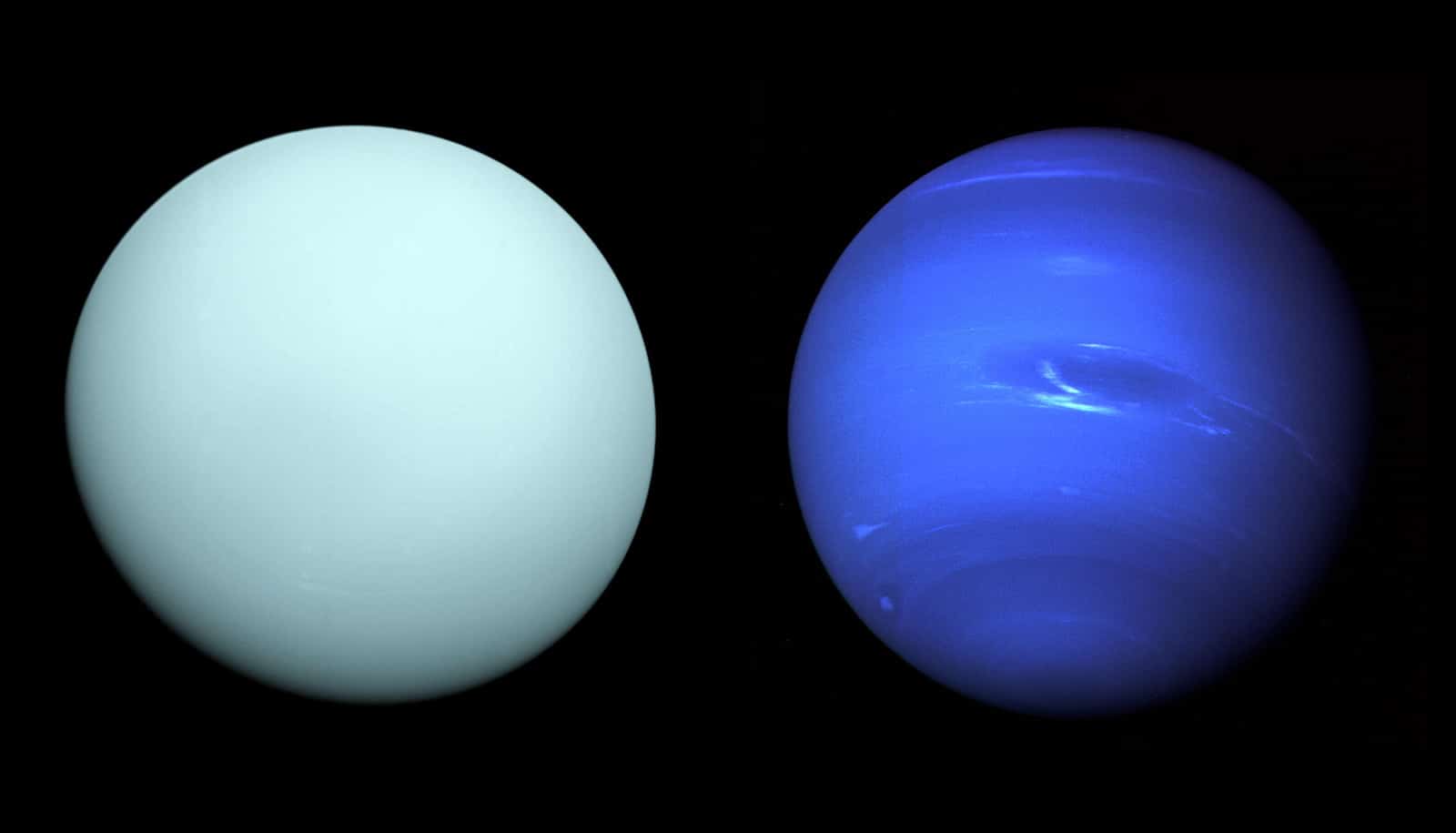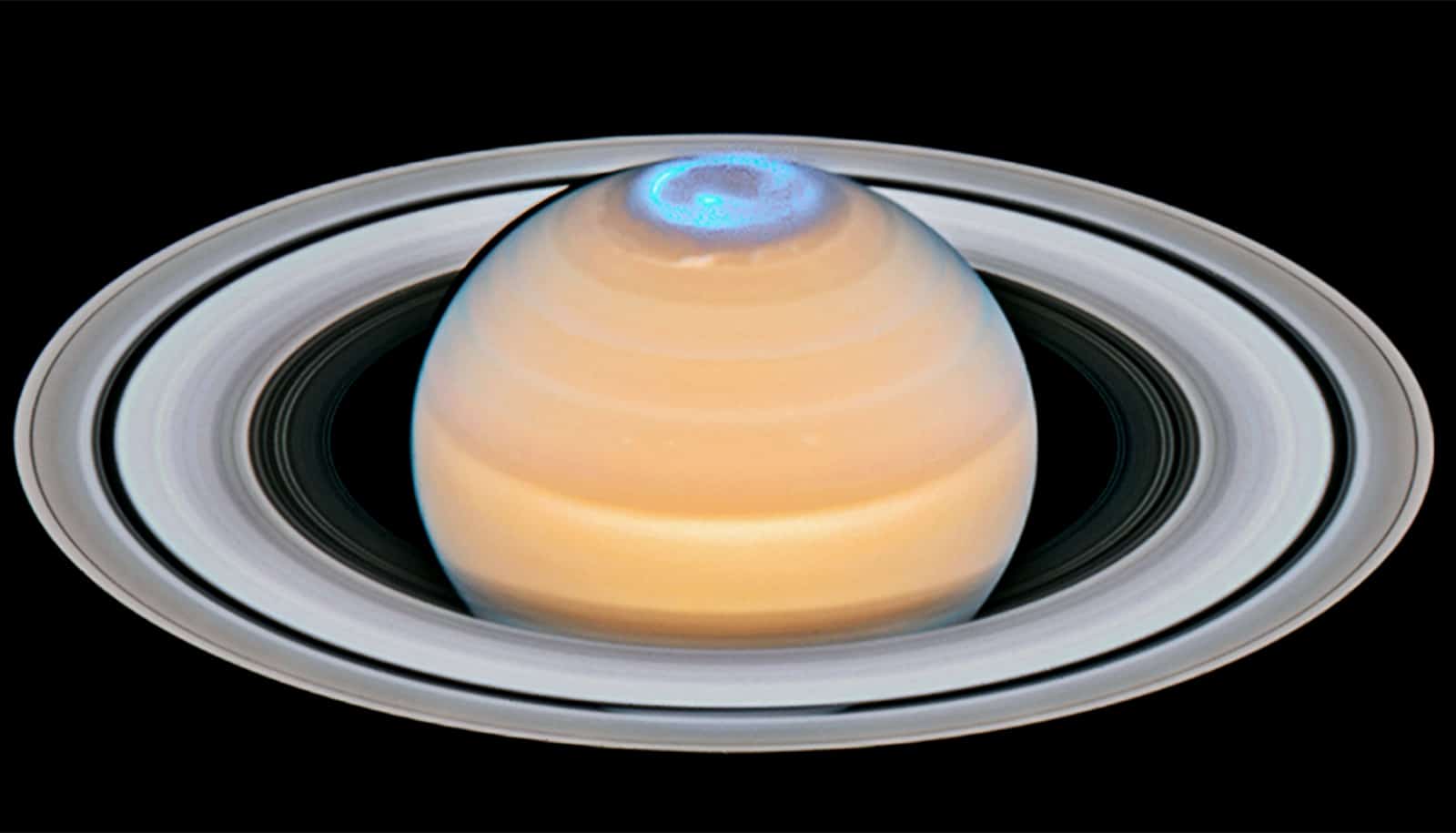
(Credit: Getty Images )
Temp suggests rocky clouds on hot Jupiter ‘nightsides’
The temperature on the nightsides of certain hot Jupiters is surprisingly uniform, research finds. This suggests clouds made of minerals.

The temperature on the nightsides of some hot Jupiters is surprisingly uniform, which suggests the dark sides have clouds made of minerals and rocks.
Hot Jupiters are massive gaseous planets similar in size to Jupiter, but orbiting other stars.
Hot Jupiters have daysides that always face their host stars and nightsides that always face the darkness of space.
Using data from the Spitzer Space and the Hubble Space telescopes, the researchers from the McGill Space Institute found that the nightside temperature of 12 hot Jupiters they studied was about 800°C (1,472°F).
Unlike our familiar planet Jupiter, so-called hot Jupiters circle very close to their host star—so close that it typically takes fewer than three days to complete an orbit. As a result, hot Jupiters have daysides that permanently face their host stars and nightsides that always face the darkness of space, similarly to how the same side of the moon always faces the Earth.
The tight orbit also means these planets receive more light from their star, which is what makes them extremely hot on the dayside. But scientists had previously measured significant amounts of heat on the nightside of hot Jupiters, as well, suggesting some kind of energy transfer from one side to the other.
“Atmospheric circulation models predicted that the nightside temperatures should vary much more than they do,” says Dylan Keating, a physics PhD student working with McGill University professor Nicolas Cowan. “This is surprising because the planets we studied all receive different amounts of irradiation from their host stars and the dayside temperatures among them varies by almost 1700°C.”
Keating, the first author of a new Nature Astronomy study describing the findings, says the nightside temperatures are probably the result of condensation of vaporized rock in these very hot atmospheres.
“The uniformity of the nightside temperatures suggests that clouds on this side of the planets are likely similar to one another in composition. Our analysis suggests that these clouds are likely made of minerals such as manganese sulfide or silicates: in other words, rocks,” Keating explains.
According to Cowan, because the basic physics of cloud formation are universal, the study of the nightside clouds on hot Jupiters could give insight into cloud formation elsewhere in the universe, including on Earth. Keating says that future space telescope missions—such as the James Webb Space Telescope and the European Space Agency’s ARIEL mission—could help further characterize the dominant cloud composition on hot Jupiter nightsides, as well as to improve models of atmospheric circulation and cloud formation of these planets.
“Observing hot Jupiters at both shorter and longer wavelengths will help us determine what types of clouds are on the nightsides of these planets,” Keating explains.
Source: McGill University
The post Temp suggests rocky clouds on hot Jupiter ‘nightsides’ appeared first on Futurity.
Share this article:
This article uses material from the Futurity article, and is licenced under a CC BY-SA 4.0 International License. Images, videos and audio are available under their respective licenses.
Related Articles:
Uranus and Neptune have wonky magnetic fields: Why?
March 31, 2021 • futurityTeam solves mystery of Saturn’s hot atmosphere
April 9, 2020 • futurityLinks/images:
- https://www.futurity.org/moon-orbit-giant-impact-1286422-2/
- https://doi.org/10.1038/s41550-019-0859-z
- https://mcgill.ca/newsroom/channels/news/dark-side-extrasolar-planets-share-surprisingly-similar-temperatures-299694
- https://www.futurity.org/hot-jupiters-nightsides-temperature-2143382-2/
- https://www.futurity.org


